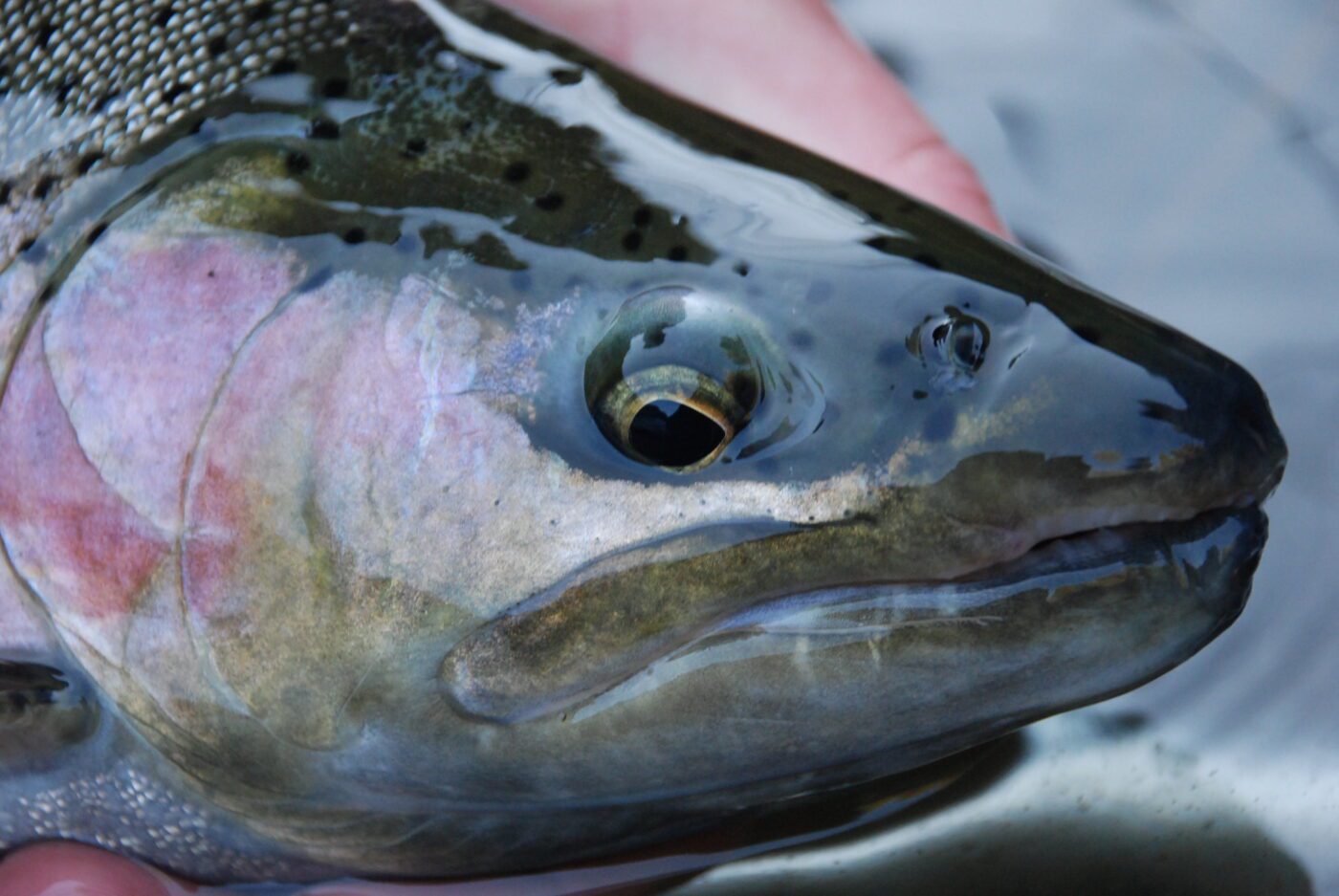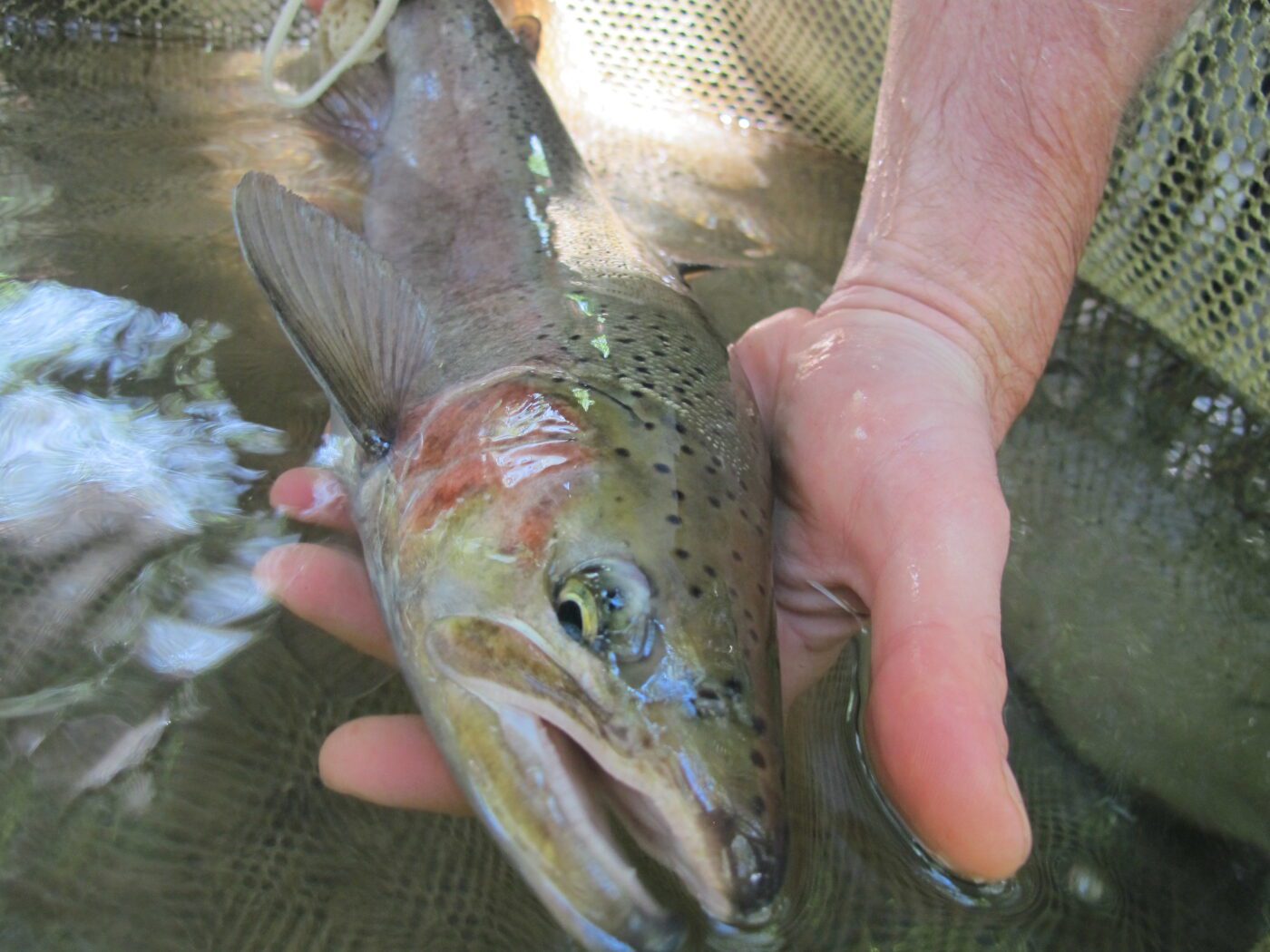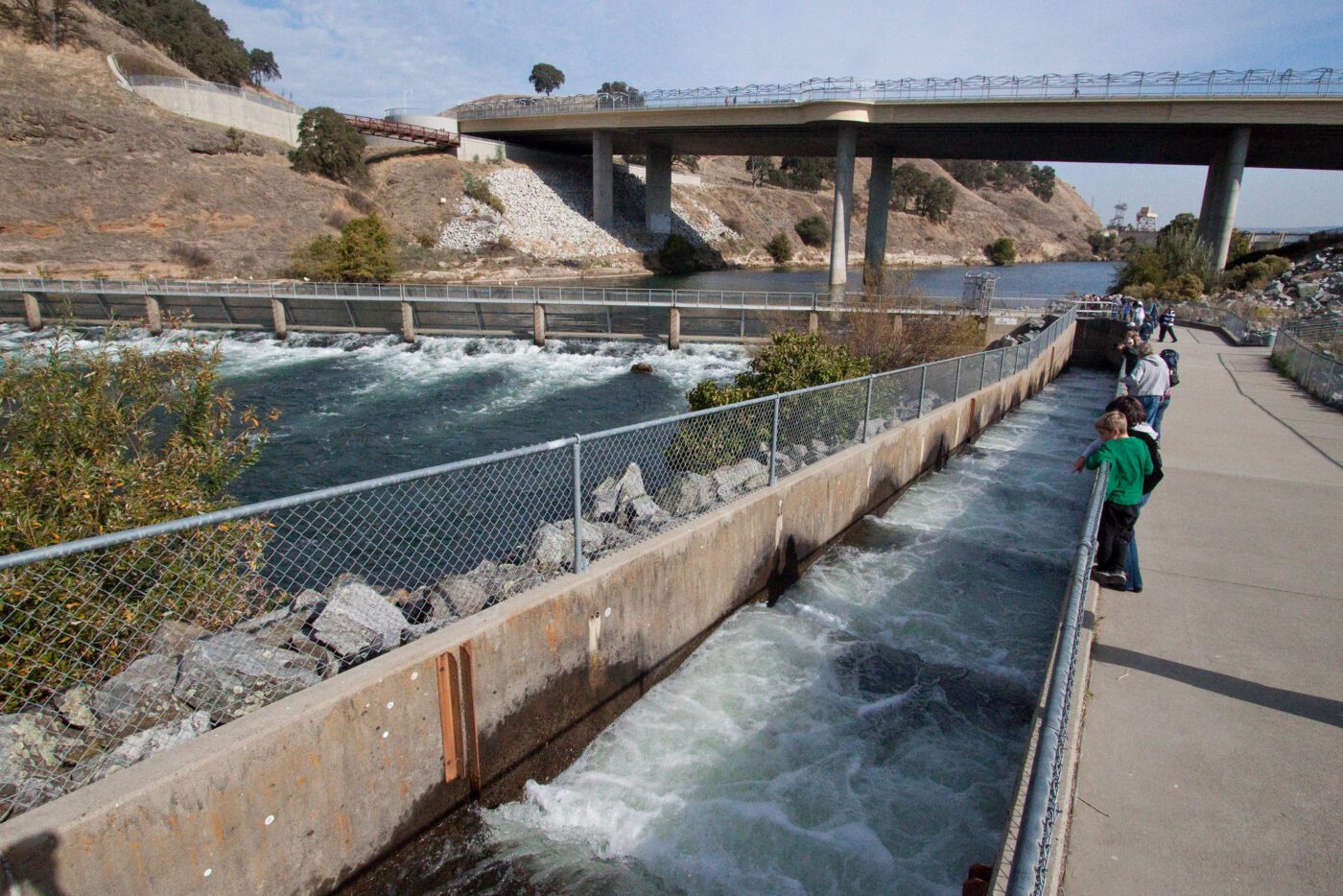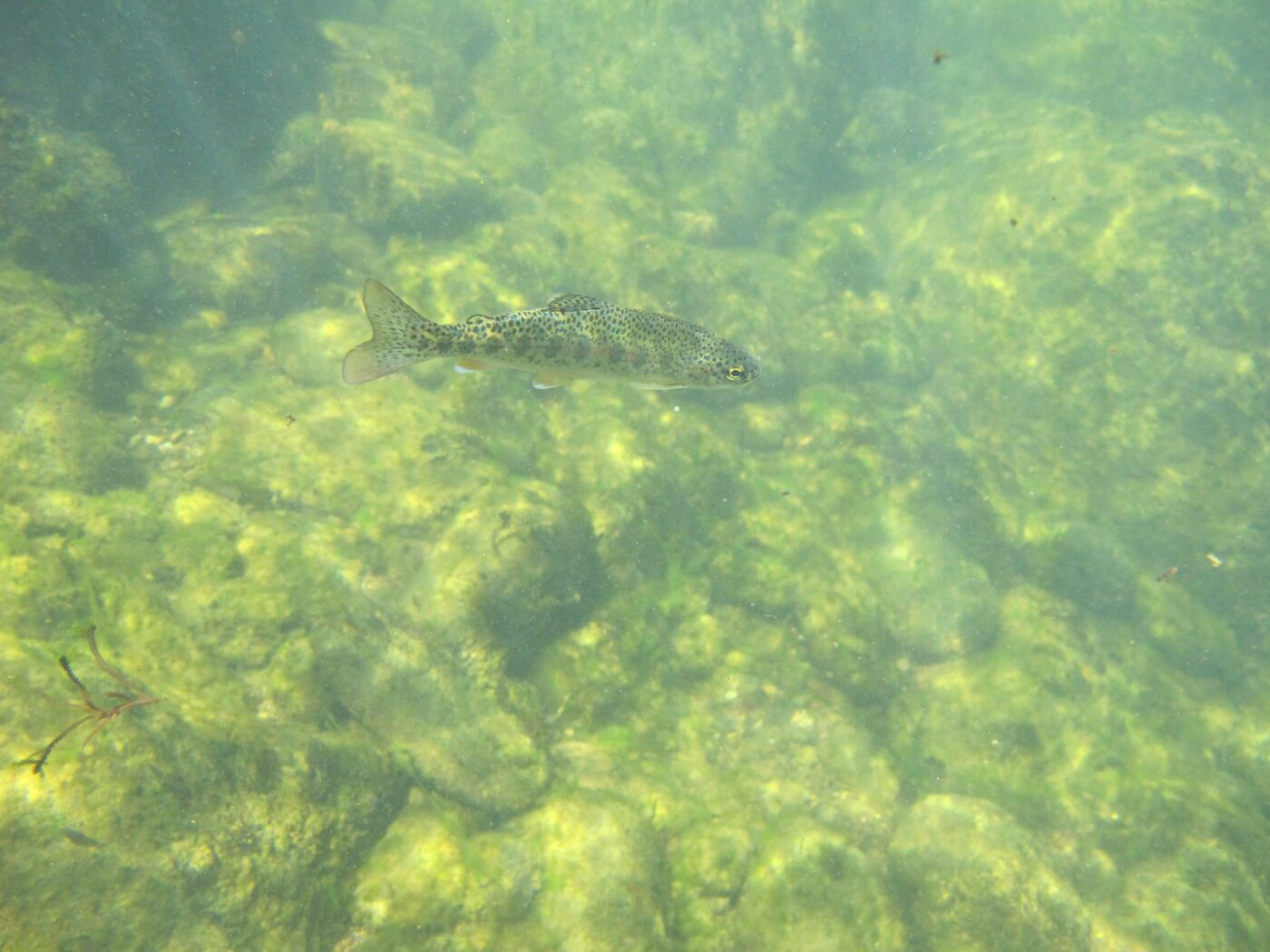Monday April 8, 2024

Genes are the blueprints that inform development and behavior, and over time they are molded by evolution into adaptations that allow species to persist in an ever-changing world. However, animals adapted to one environment sometimes find themselves suddenly dropped in another. Such is the case for certain hatchery-raised steelhead (Oncorhynchus mykiss) in California’s Central Valley. The genes of steelhead play an important role in determining their life history, and may influence the timing of migration and maturation. To evaluate how such genes may be impacted by hatchery practices, researchers from UC Santa Cruz and the National Marine Fisheries Service dove into the genetics of steelhead from four hatcheries in the Sacramento River Basin (Goetz et al. 2024). The findings of their investigation show just how influential genes are in determining the path that a steelhead’s life will take.

An adult steelhead from a stream on the California coast.
Species living in environments that experience extreme variation often have to be highly adaptable to survive. This is exemplified by O. mykiss, a species of fish known to exhibit at least 36 different life history pathways – from ocean-going steelhead to river-dwelling rainbow trout and everything in between. Genes related to these life history pathways may be triggered by environmental factors to produce an appropriate response to the given conditions. But disentangling how genetic variation and environmental cues result in a particular set of characteristics expressed in a fish can be tricky. This gets even trickier in species that have been moved around by humans, as their genes may respond to new environments in unpredictable ways. However, scientists have begun to learn more about which genes are important in determining steelhead life history.

The fish ladder at Nimbus Hatchery.
Hatcheries typically raise juveniles in a protective environment then release them in a river to migrate to the ocean. When mature, they will return to the hatchery because of a natural homing behavior. Because steelhead can spawn more than once in their lifetime, hatcheries return spawned adults back to the river where they will either die a natural death, or return to the ocean. The Coleman National Fish Hatchery, the Feather River Hatchery, the Mokelumne River Hatchery, and the Nimbus Hatchery are all located in the Sacramento River Basin and rear steelhead in this way. However, the Nimbus Hatchery was established using coastal steelhead, which are genetically distinct from those in the Valley. Placing these coastal-lineage fish in the same habitat as their Valley-lineage cousins inadvertently provided the opportunity for a genetic experiment. The authors of the study leveraged this circumstance to investigate how genetics influences the life history traits of steelhead, specifically in relation to run timing, the frequency of individuals migrating to different rivers as adults (also known as straying), and the number of spawning events in an individual’s life.
From 2011 to 2019, the researchers collected fin clips from over 23,000 steelhead that returned to the hatcheries. Genetic material from the fin clips was then analyzed for 92 different genetic markers to produce a genetic fingerprint (called a genotype) for each individual. By examining these genotypes, they were able to match parents and offspring, creating multigenerational pedigrees. Researchers used these pedigrees to calculate age of the offspring when they returned to the hatchery, and to determine how many individuals spawned more than once.

The raceways at Nimbus Hatchery where young steelhead are reared prior to release.
Researchers found that the coastal-lineage steelhead remained genetically distinct from the Valley-lineage fish, but this wasn’t the only interesting result. For example, it was revealed that repeat spawning was lower within the coastal-lineage steelhead compared to the Valley-lineage fish. They also found that Valley-lineage steelhead tended to return to the hatcheries when they were two years old, whereas the coastal-lineage steelhead more frequently returned when they were three years old. However, this fluctuated with environmental conditions, and the coastal-lineage fish showed a shift to two-year-old spawners following the end of a five-year drought in 2017. The timing of spawning was also shown to be age-dependent in coastal-lineage fish, with older fish spawning earlier in the season than younger fish. In addition, older coastal-lineage steelhead were more likely to have genotypes associated with anadromy. Neither of these patterns were observed in the Valley-lineage fish.

Juvenile O. mykiss may grow up to be a resident rainbow trout or a migratory steelhead depending on their genes and their environment.
Despite inhabiting the same basin since the 1950s, the coastal-lineage steelhead still maintain genetic and life history patterns that are distinct from their Central Valley cousins. These differences suggest a low level of interbreeding between these two lineages, and translate to variable responses to environmental conditions. There is still much work to be done to fully understand the role of genetics in steelhead life histories, and future work will evaluate genetic regions known to be associated with migration timing and age at maturity. Nonetheless, the results of this study reveal how complex interactions between management and genetics lead to variation in life history, and show that different lineages may continue to respond differently to changing environments for many generations.
Header Image: An adult steelhead.
This post was featured in our weekly e-newsletter, the Fish Report. You can subscribe to the Fish Report here.
